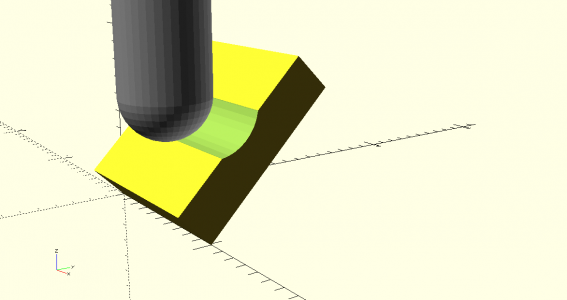- Joined
- Feb 21, 2022
- Messages
- 771
Machining slots with a ball nose end mill usually gives a different finish on each side of the slot. One side is conventionally milled & the other climb milled. Also the cutting speed approaches zero towards the centre where there is often very little chip clearance. Has anyone tilted the head of the machine to eliminate these issues?
I tried the theory out on my CNC but had to mill uphill as I could not tilt the head, it should yield the same result.
I tried the theory out on my CNC but had to mill uphill as I could not tilt the head, it should yield the same result.


